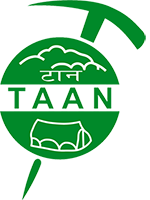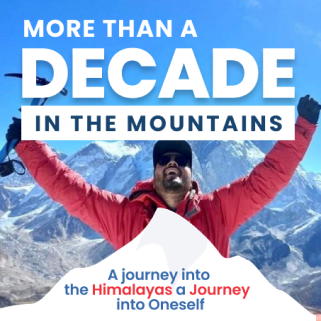
Langtang Village: Before and After the Earthquake

Langtang Village: Before and After the Earthquake
swotah travel
14160
18, 01 2023
Natural calamities have changed the world map, lifestyle, and people's quality of life. Many countries have faced several forms of catastrophe throughout the years that have affected their economy, people's life, and property. While some nations have been able to get up from the ground, not all have revived - one of them is Nepal.
After the catastrophic earthquake in 2015, many parts of Nepal were devastated with less chance to restore and rebuild. While many organizations, individuals, and the Nepalese Government Welfare have worked out in many parts of the country, it has never been the same since the tragedy struck.
When it comes to Nepal, the earthquake of April 25, 2015, changed it completely. The country lost nearly 9000 people, and thousands were injured because of the devastating calamity. Many infrastructures deteriorated, bringing down the country's economy to low statistics. Similarly, the blockade imposed by the neighboring country, India, became the reason for harsh survival for many people.
Langtang village also was brought down to ruins by the 2015 Earthquake. The village located in northern Nepal was reduced to rubble and dust, with homes and livelihoods destroyed. But Langtang did not go down on the ground with its soul - it has slowly revived since the tragic earthquake hit in 2015. With the government's help and international aid, the village has gradually been rebuilding itself over the past eight years with much success.

Photo: Langtang Valley before and after the earthquake
In this blog post, we will explore how far Langtang has come since then by looking at its before-and after transformation. From rebuilding homes to reviving economic activities, read on to learn more about this remarkable story of resilience and hope!
Overview Of Langtang Valley
Langtang Valley was discovered over a thousand years ago. According to the reports by World Nutrition, Tibetans from the North found Beyul (hidden valley) of Langtang, and since then, there have been inhabitants in this region.
The report shows that explorers from the South had found this place by 1954. The region has become one of the best destination choices for many tourists since Langtang National Park was established in 1976. In 2014 alone, Langtang recorded the highest number of visitors, over 100,000.
In recent days, tourism has been one of the significant sources of income here in the Langtang region.
How Was Life in Langtang Village Before the Earthquake in 2015?
Before the earthquake in 2015, life in Langtang village was simple but idyllic. The villagers were subsistence farmers and had a traditional lifestyle, growing crops like potatoes and barley. Alongside agriculture, animal husbandry and livestock were the primary sources of income for the people in Langtang, comprising Tamang, Sherpa, and Gurung communities. They herded yak and goats and used to go to the highlands and pastures as their daily routine.
Apart from the local lifestyle, Langtang village was one of the most visited destinations in tourism prospects. There were multiple homestays, and the development process was gradual. The establishment of several hotels and lodges for tourism was in process, which became a subsidiary source of income for many people in this region.
Then, on April 25, 2015, everything changed. A massive earthquake struck Nepal, killing over 8,964 people, injuring 21,952, and leaving hundreds of thousands more homeless. Langtang village was one of the hardest hit areas; almost all houses were destroyed, and many villagers lost their lives.
What Were the Immediate Effects of the 2015 earthquake in Langtang?
The 2015 earthquake in Langtang immediately affected the village and its people. The most obvious impact was the mass destruction of infrastructures. Many homes were deteriorated as the heavy 7.8 Richter Scale earthquake hit hard in this region. This left many people homeless and without necessities like food and water.

Additionally, the earthquake caused landslides that blocked roads and made it difficult for aid to reach the village. Many people were also injured in the earthquake and needed medical attention. In Langtang valley alone, more than 400 people were buried, including local people, tourists, their guides, and porters. The vast avalanche from Langtang Lirung buried the whole village, resulting in mass death and destruction.
Those who survived the earthquake later suffered the blockade from external support since the debris covered the routes.
How Did the Rebuilding Process Start in Langtang After 2015 Earthquake?
Following April 25's massive strike, Nepal faced another catastrophic aftershock of around 7.3 Richter Scale on May 12, 2015. It brought some destruction to the whole nation. Nevertheless, people had come together hand in hand to stand out the calamity.
There was an immediate initiation of the rebuilding process in Langtang Village. By the time the second strike hit the village, local survivors were already rehabilitated with the temporary camps in safer places. Though life was hard, the first step of rebuilding started with refuge in a temporary shelter. The external support was only a myth at that time since the routes to Langtang Villages were all destroyed and left in ruins by the avalanche of Langtang Lirung.
However, the local people came upfront to manage their survival in no time. Several temporary camps were built using stones and timber. People started clearing the debris for the settlement.
After some months, Langtang village received external support from several national and international volunteers. Since then, the infrastructures like homes, hotels, and gompas have been reconstructed. There are now schools, clinics in Langtang, and even a new community center where villagers can gather.
What Organizations Are Helping Rebuild Langtang Village after the 2015 earthquake?
As said earlier, Langtang Village stood again with the local people's help and national and international support. Since the village is located in a remote area of Nepal and was left with no access due to the devastating earthquake, it took months for help to reach the villagers.
There were many organizations stepped in to help with the rebuilding process, including:
The Langtang Relief Fund: This fund was set up to help with the immediate needs of the villagers after the earthquake. It provided food, shelter, and medical supplies. The campaign has been active on social media sites like Facebook. You can also view the archive of this campaign's work in Langtang Village during the disaster.
Himalayan Climate Initiative: Himalayan Climate Initiative (HCI Nepal from Kathmandu) helped to rebuild houses and infrastructure in Langtang village. They also worked on creating green jobs in the village, such as installing solar panels. Many volunteers from inside and outside the country participated in the rebuilding campaign - the good side to see was HCI Nepal engaged the youth and even students from several institutions. HCI Nepal was highly involved in DRR campaigns in Rasuwa, Sindhupalchowk, and many other districts after the earthquake.
Sunaulo Sansar: The NGO from Kathmandu, Sunaulo Sansar, was also one of the support teams that helped build around Brabal in Langtang. People from South Tyrol - Italy, Switzerland, and Germany funded the project to rehabilitate the displaced community. The villagers were provided with necessities like sand, cement, steel, and corrugated iron to build their homes.
What Is Life Like for People Living in Langtang Village Now?
In the aftermath of the 2015 earthquake, Langtang Village was destroyed. However, the people who once called it home have worked tirelessly to rebuild.
Today, life in Langtang Village is very different than before the earthquake. The village is now made up primarily of temporary structures, as many rebuilt houses are less sturdy than they once were. Despite this, the villagers have managed to create a vibrant community. Several concrete places were made after the earthquake. The monasteries are rebuilt, including the oldest monastery in Langtang, Kyanjin Gompa, with the help of Japanese Support.

In addition, the region has been an ideal destination for many indoor and outdoor tourists. The homestays, hotels, and lodges are built again to help tourists accommodate, and the lifestyle has undoubtedly changed.
Also Read: Mount Everest Rainbow Valley: Death Zone of Everest
FAQs
Q: What is Langtang Valley?
A: Langtang Valley is an area in northern Nepal known for its cultural heritage, stunning scenery, and popular trekking opportunities. The region was first discovered by Tibetans from the north over a thousand years ago and has since become a popular destination for tourists.
Q: What happened to Langtang Valley in 2015?
A: In April 2015, Langtang Valley was devastated by an avalanche and landslide triggered by a 7.8 magnitude earthquake in Nepal. The event killed over 200 people in the valley and destroyed many of the area's villages, homes, and sacred sites.
Q: How has Langtang Valley been rebuilding since the 2015 Earthquake?
A: Since the 2015 Earthquake, Langtang Valley has been gradually rebuilding itself with the help of local people and national and international support. The village has been rebuilt with modern structures and restored monasteries, and the region is now a popular tourist destination.
Q: Is Langtang village rebuilt?
A: Yes, Langtang Village has been rebuilt since the earthquake. The traditional stone and timber architecture has been replaced with more modern infrastructure constructed from concrete.
Conclusion
Langtang Valley is a resilient community that has come a long way since the tragic earthquake of 2015. With the help of local people, national, and international
support, the village has slowly been rebuilding itself over the past eight years.
From reconstructing homes to reviving economic activities, Langtang is now a vibrant community and a popular tourist spot. The story of the village's transformation is a testament to the strength of the human spirit and resilience in the face of adversity.
If you're looking for an easily accessible and enjoyable trekking destination in Nepal, Langtang Valley trek is the perfect choice for you! This famous trekking spot offers visitors a glimpse into the vibrant and resilient culture of the local community.
Why not take the opportunity to support the locals and businesses while you're there? Every little bit helps to keep this incredible village alive.
If you have any questions or queries about Langtang Valley, don't hesitate to contact us.
NEWSLETTER SIGNUP
Sign up to receive our trip ideas and travel offers!
Get updates and Exclusive Offers up to 20% Discount








